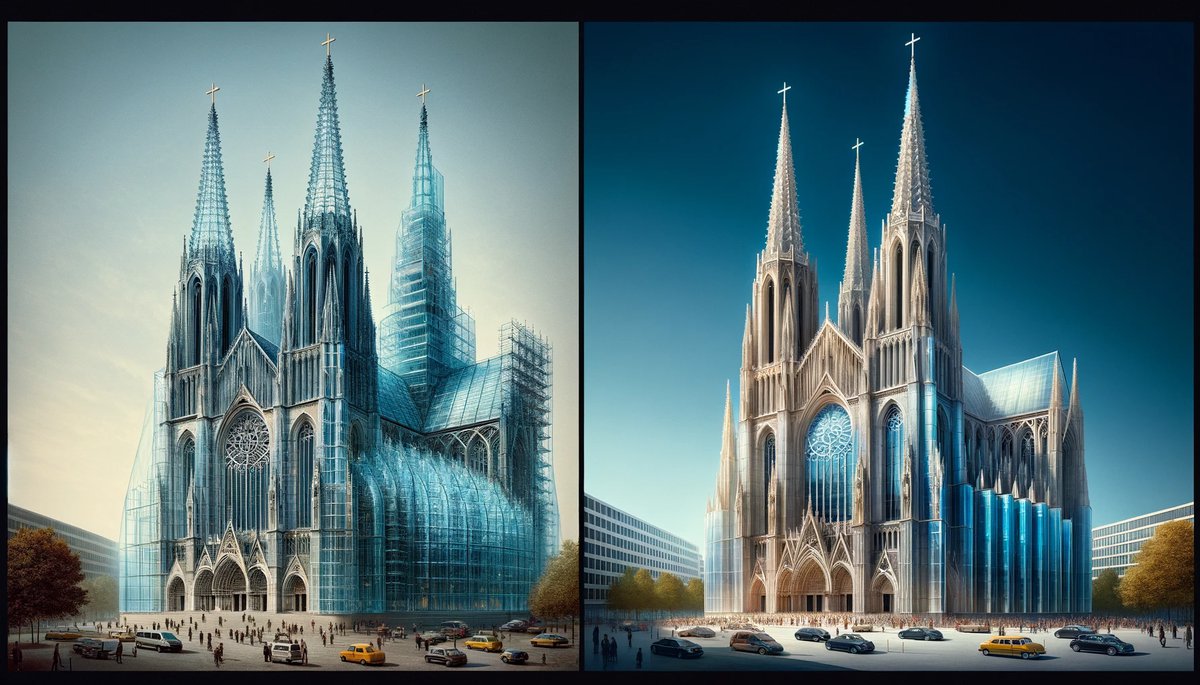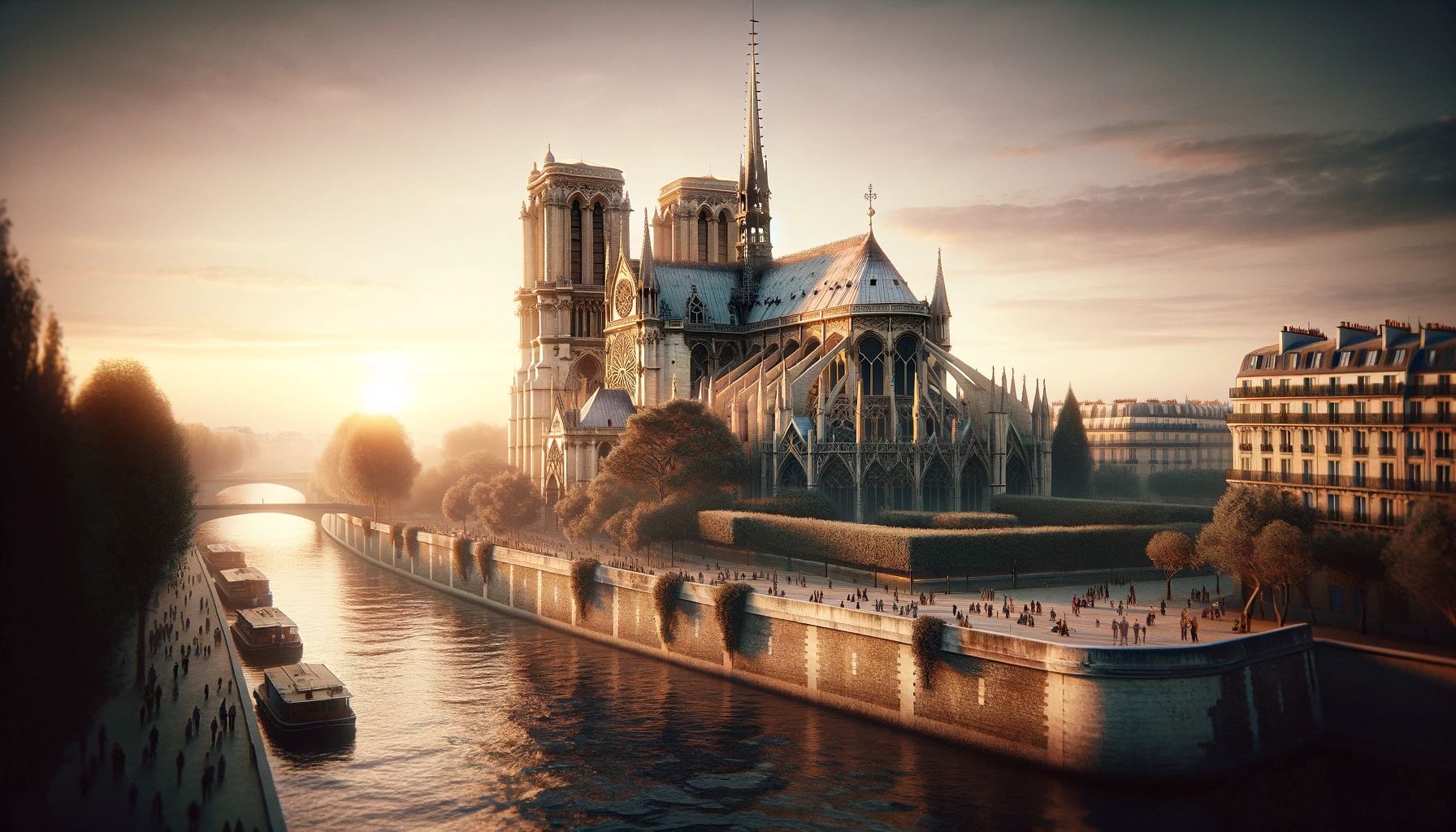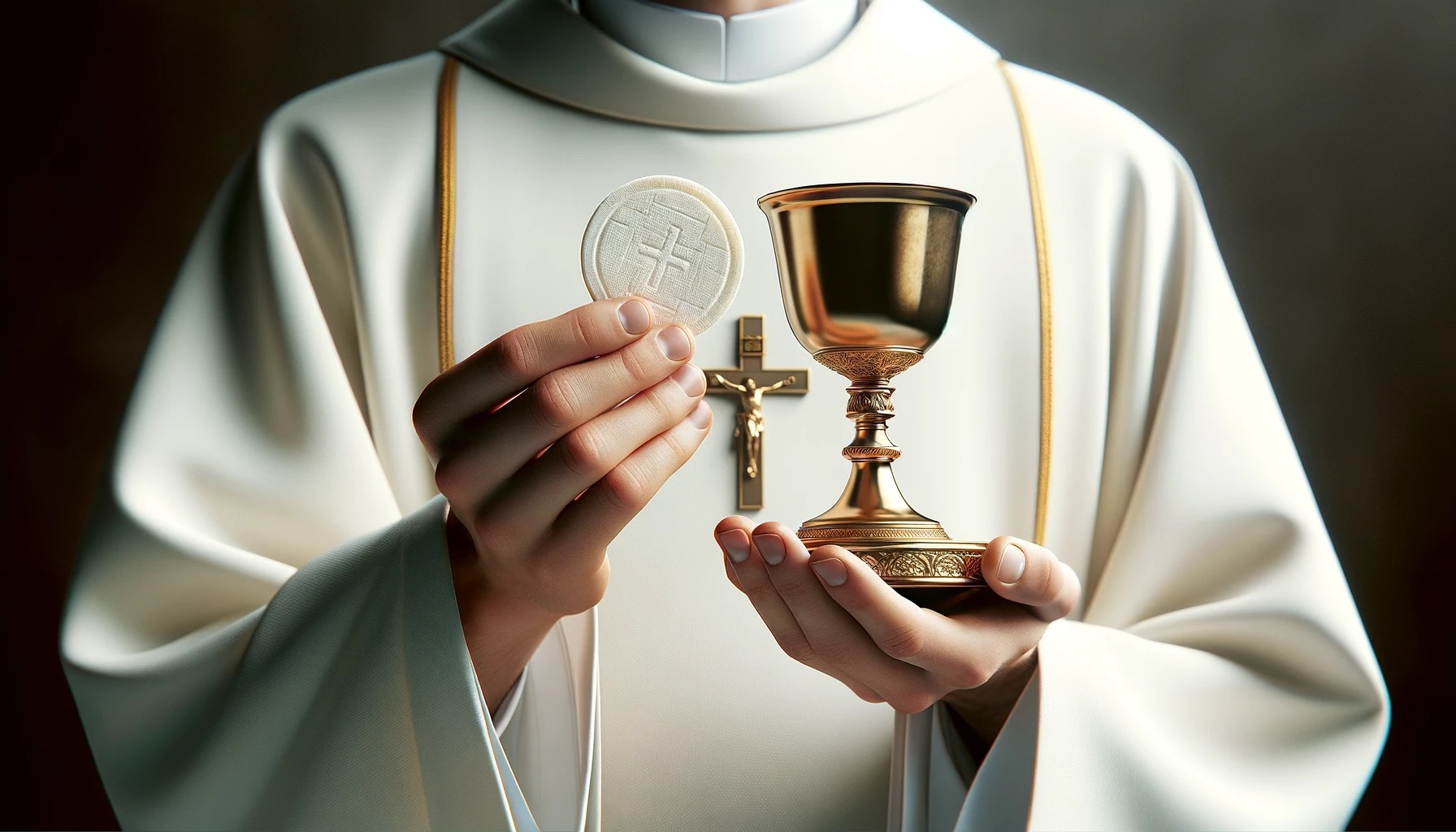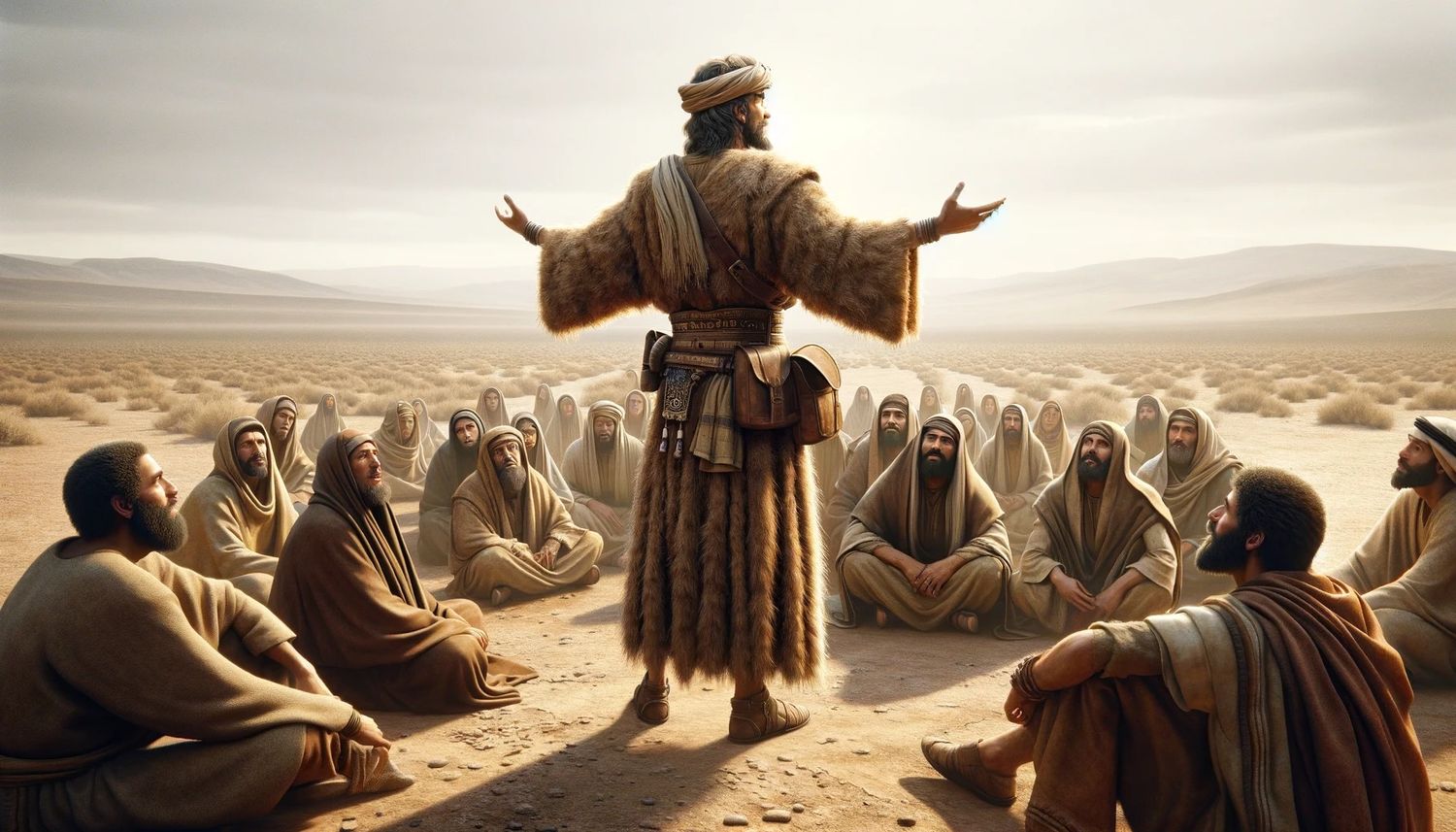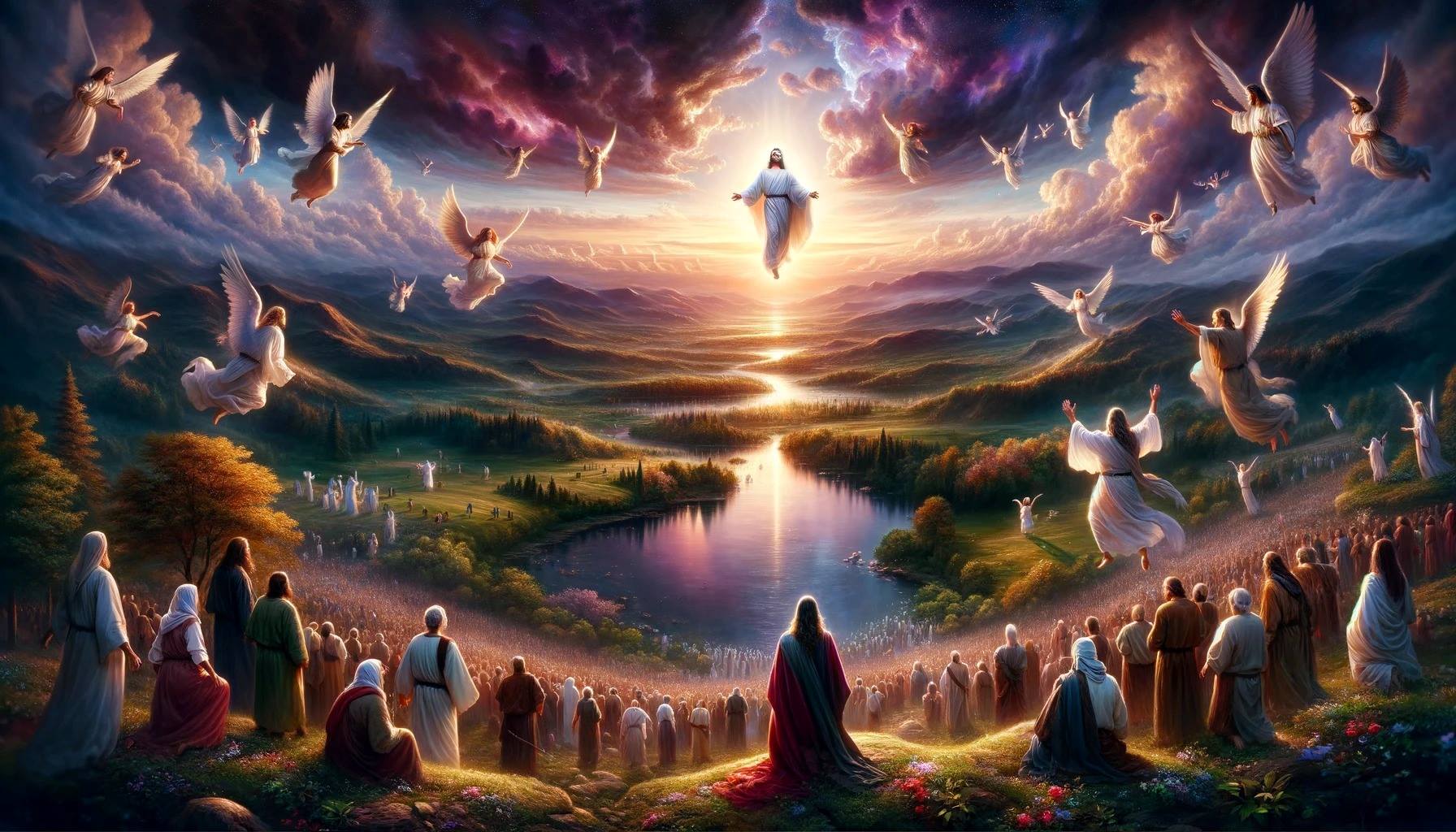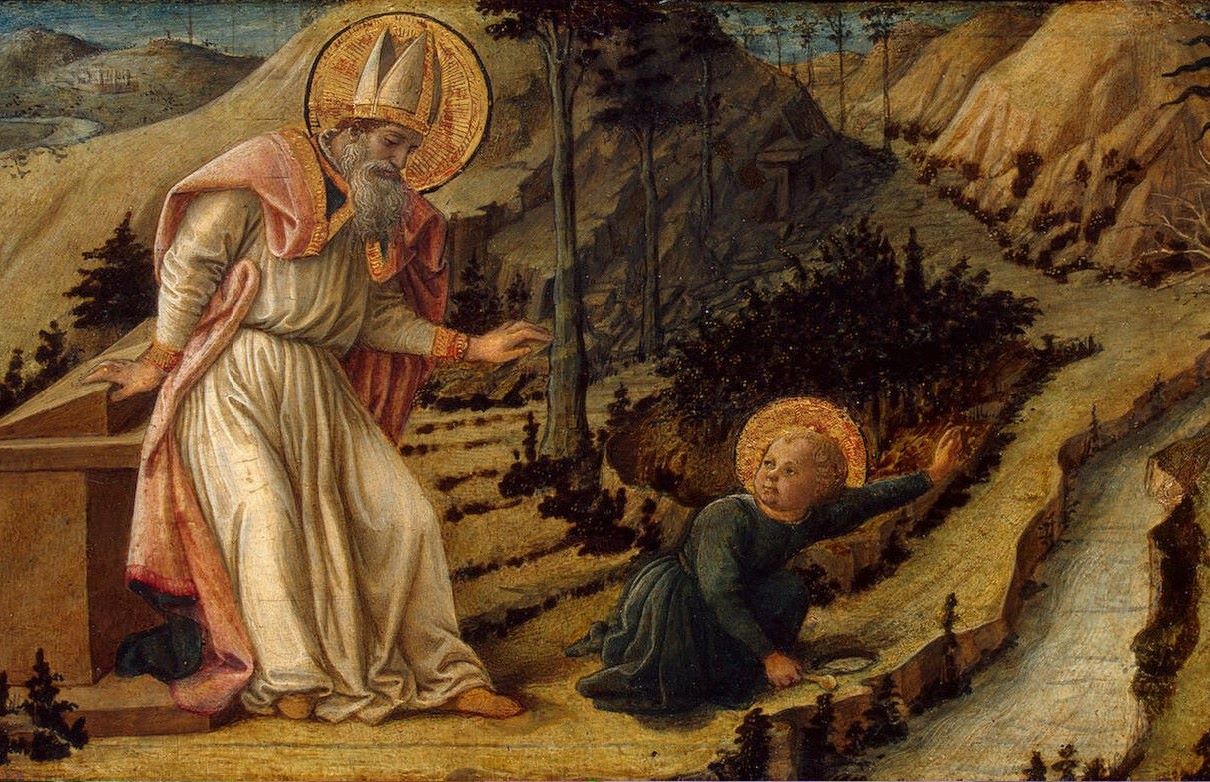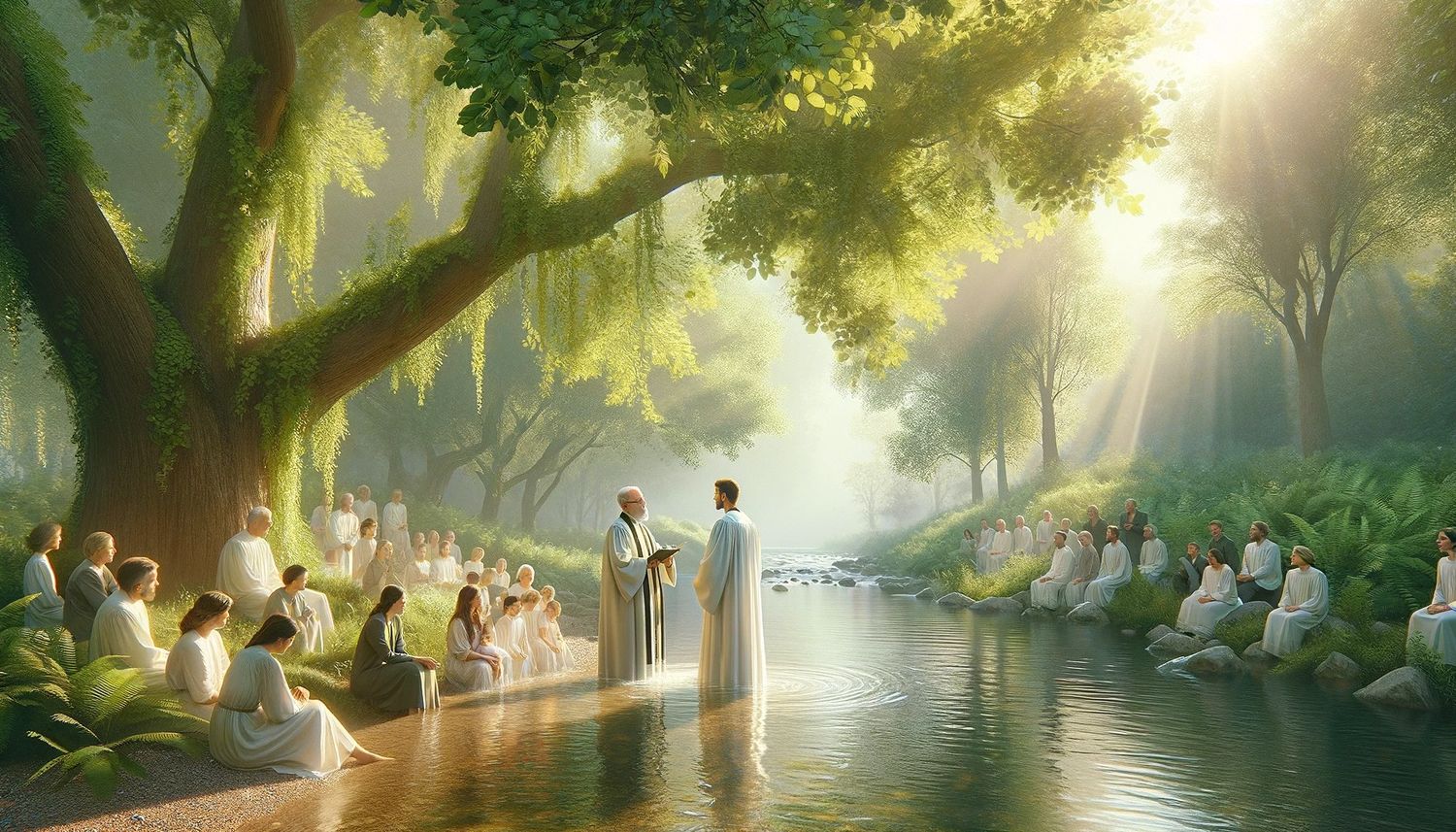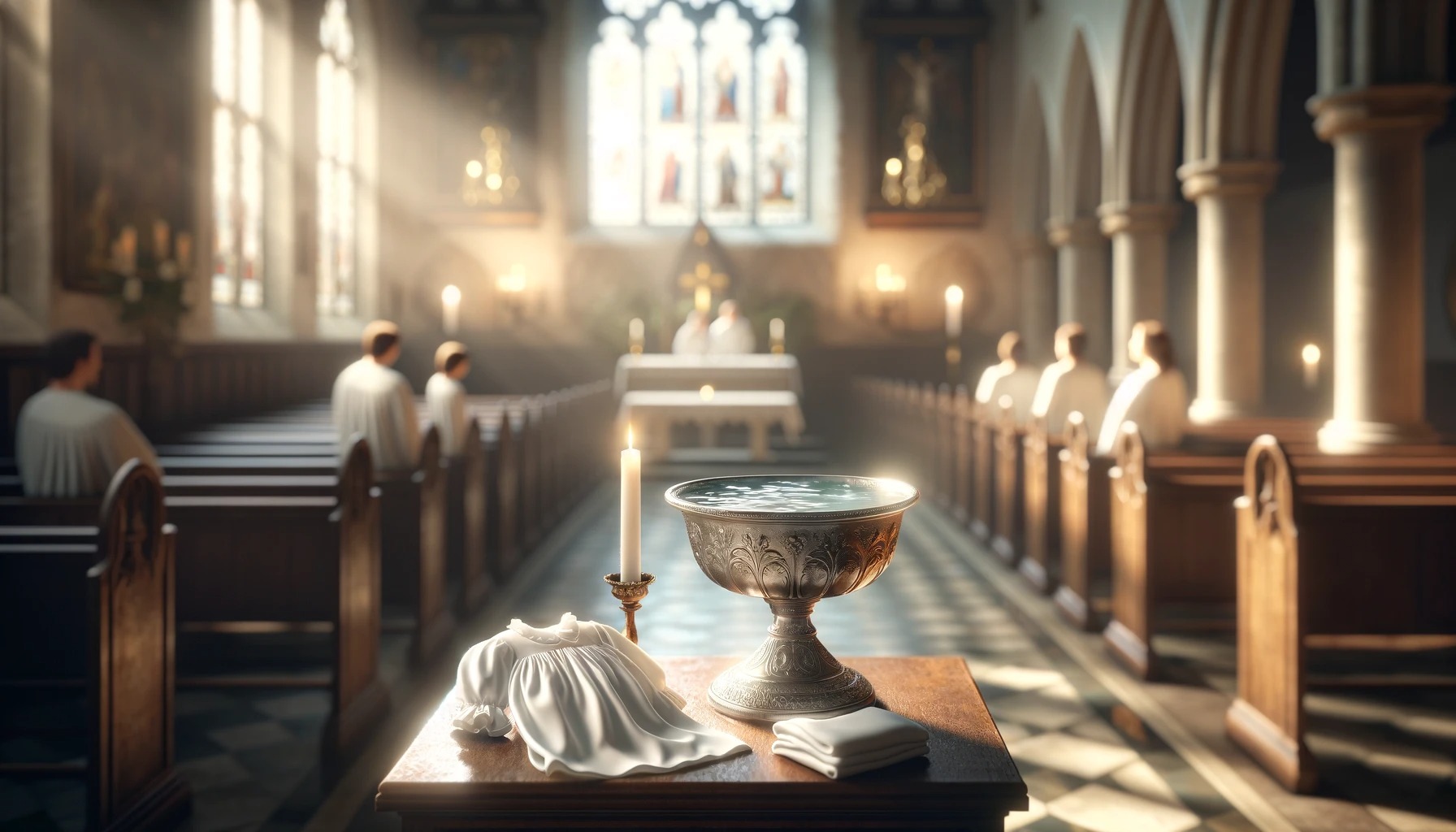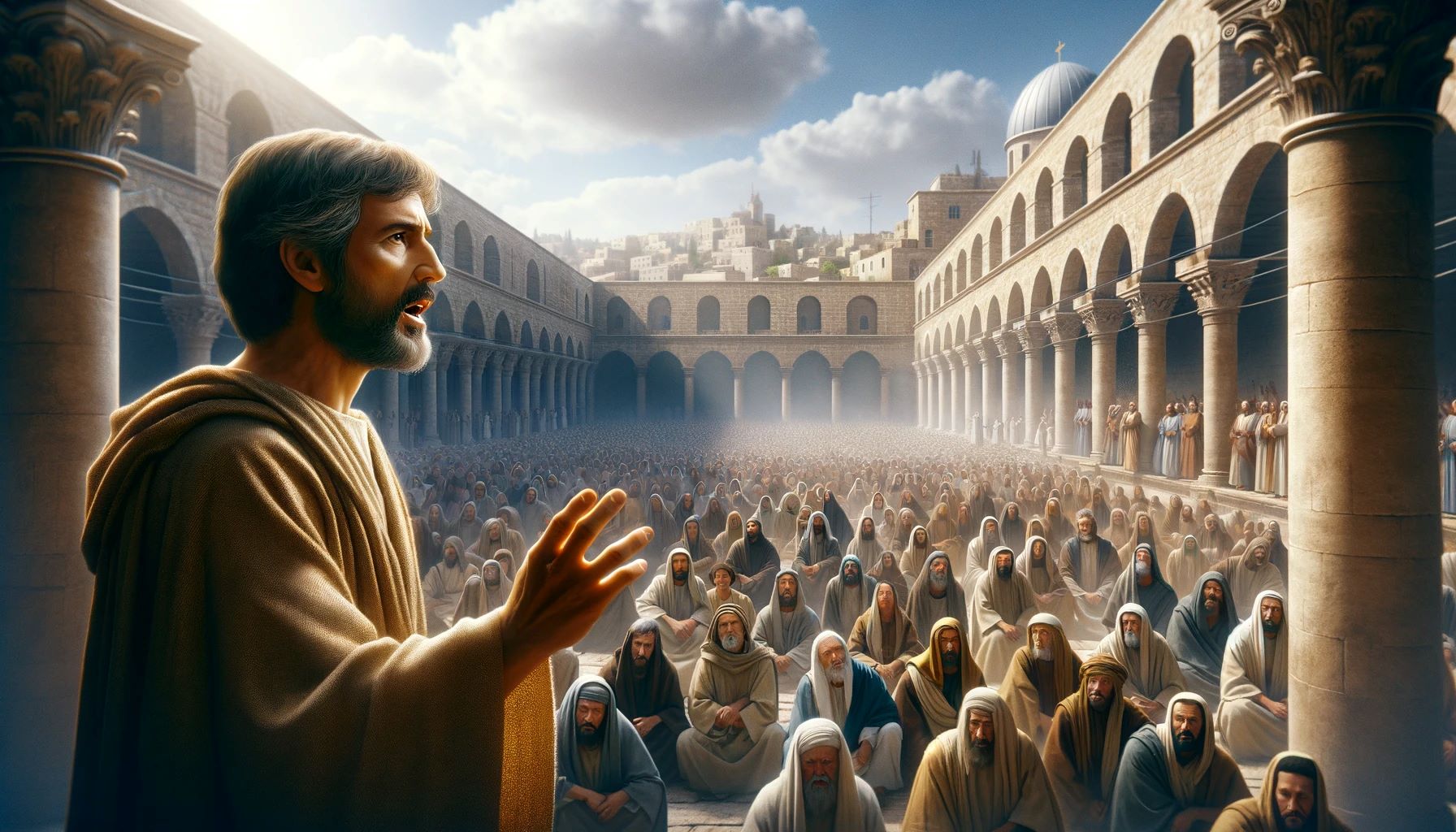Home>Arts and Culture>What Happened To Robert Schuller’s Crystal Cathedral


Arts and Culture
What Happened To Robert Schuller’s Crystal Cathedral
Published: February 18, 2024
Ericka Andersen, an editor at Christian.net, expertly merges digital strategy with content creation, focusing on faith and societal issues. Her communication skills enhance the platform's engaging narratives, fostering meaningful dialogue on belief's impact on society.
Discover the transformation of Robert Schuller's iconic Crystal Cathedral and its impact on arts and culture. Explore the history and changes of this renowned architectural marvel.
(Many of the links in this article redirect to a specific reviewed product. Your purchase of these products through affiliate links helps to generate commission for Christian.net, at no extra cost. Learn more)
Table of Contents
Introduction
The story of the Crystal Cathedral is a captivating tale that intertwines the worlds of religion, architecture, and finance. At the heart of this narrative is the renowned televangelist Robert Schuller, whose vision and charisma propelled the Crystal Cathedral to international fame. This iconic structure, with its striking glass facade and innovative design, stood as a symbol of Schuller's ambitious mission to spread the message of hope and positivity to millions of followers around the globe.
As we delve into the history of the Crystal Cathedral, we will uncover the meteoric rise of this architectural marvel, the financial challenges that ultimately led to its bankruptcy, and the surprising turn of events that saw it transition into the hands of the Roman Catholic Diocese. Furthermore, we will explore the extensive renovation efforts that transformed the Crystal Cathedral into the awe-inspiring Christ Cathedral, breathing new life into this historic landmark.
The legacy of Robert Schuller and the enduring impact of the Crystal Cathedral on both religious and architectural landscapes will also be examined. Through this exploration, we will gain a deeper understanding of the complex interplay between faith, finance, and the enduring human desire to create and preserve monumental works of art and worship. Join us on this journey as we unravel the captivating saga of the Crystal Cathedral and the remarkable individuals who shaped its destiny.
Read more: Where Is The Crystal Cathedral
The Rise of the Crystal Cathedral
The genesis of the Crystal Cathedral can be traced back to the visionary zeal of Reverend Robert H. Schuller, a charismatic and forward-thinking preacher who sought to create a place of worship that transcended traditional architectural norms. In 1955, Schuller founded the Garden Grove Community Church in California, laying the groundwork for what would eventually evolve into the renowned Crystal Cathedral.
Driven by a fervent belief in the power of positive thinking and the potential for spiritual renewal, Schuller embarked on a mission to construct a truly innovative and awe-inspiring sanctuary. The result was the iconic Crystal Cathedral, a gleaming structure crafted predominantly from glass, steel, and concrete. Designed by the esteemed architect Philip Johnson, the cathedral's ethereal beauty and unconventional form captivated the imagination of believers and non-believers alike.
Upon its completion in 1980, the Crystal Cathedral stood as a testament to Schuller's unwavering determination and progressive vision. Its striking architecture, characterized by soaring glass walls and a crystalline exterior, defied convention and redefined the concept of sacred spaces. The cathedral's interior, adorned with intricate steel trusses and a state-of-the-art pipe organ, exuded an atmosphere of grandeur and spiritual transcendence.
Moreover, the Crystal Cathedral's innovative use of technology, including the installation of large video screens and advanced sound systems, revolutionized the approach to religious broadcasting. Schuller's pioneering efforts in utilizing media as a tool for spreading the message of hope and faith garnered a global following, propelling the Crystal Cathedral into the international spotlight.
As the Crystal Cathedral gained prominence, it became a beacon of inspiration for individuals seeking solace, enlightenment, and a renewed sense of purpose. Its renowned "Hour of Power" television program, hosted by Schuller, reached millions of viewers worldwide, fostering a community of believers who found solace and spiritual nourishment in his uplifting sermons.
The rise of the Crystal Cathedral symbolized a convergence of architectural innovation, technological advancement, and spiritual enlightenment. It embodied Schuller's unwavering commitment to fostering a culture of optimism and resilience, transcending traditional religious boundaries and embracing individuals from all walks of life. The cathedral's ascent to prominence marked a pivotal chapter in the history of modern religious architecture, leaving an indelible imprint on the hearts and minds of those who beheld its radiant splendor.
Financial Struggles and Bankruptcy
The grandeur of the Crystal Cathedral's architectural marvel was juxtaposed against a backdrop of mounting financial challenges that eventually led to a harrowing period of bankruptcy. Despite its global renown and the immense impact of Schuller's televised ministry, the cathedral found itself grappling with a daunting financial burden.
The ambitious construction and maintenance costs of the expansive glass structure, coupled with the economic downturn of the late 2000s, placed a significant strain on the Crystal Cathedral's financial stability. The organization faced escalating debt and struggled to meet its financial obligations, ultimately culminating in a high-profile bankruptcy filing in 2010.
The bankruptcy proceedings sent shockwaves through the religious and architectural communities, prompting soul-searching discussions about the intersection of faith, finance, and the sustainability of monumental religious institutions. The news of the Crystal Cathedral's financial woes reverberated globally, sparking concerns about the future of this iconic symbol of spiritual inspiration.
Amidst the turmoil, the fate of the Crystal Cathedral hung in the balance, casting a shadow of uncertainty over its cherished legacy. The prospect of losing this architectural gem, which had served as a beacon of hope and spiritual solace for countless individuals, sent ripples of dismay through its devoted congregation and admirers worldwide.
The tumultuous period of financial struggle and subsequent bankruptcy underscored the inherent vulnerability of even the most revered religious institutions in the face of economic adversity. It prompted introspection and raised poignant questions about the delicate balance between faith, stewardship, and fiscal responsibility.
The narrative of the Crystal Cathedral's financial struggles and bankruptcy serves as a poignant reminder of the complex realities that underpin the preservation and sustainability of monumental religious edifices. It illuminates the profound challenges faced by institutions striving to uphold their spiritual mission while navigating the turbulent waters of financial uncertainty.
The bankruptcy of the Crystal Cathedral marked a pivotal juncture in its storied history, setting the stage for a remarkable transformation that would redefine its purpose and legacy. This period of adversity would ultimately pave the way for a new chapter in the cathedral's saga, one that would see it rise from the ashes and undergo a profound metamorphosis, transcending the confines of financial turmoil to embrace a future imbued with renewed hope and resilience.
Sale to the Roman Catholic Diocese
Amid the tumultuous backdrop of the Crystal Cathedral's financial crisis, a remarkable turn of events unfolded, reshaping the cathedral's destiny in an unexpected and profound manner. In a historic and unprecedented move, the Roman Catholic Diocese of Orange emerged as the unexpected suitor in the acquisition of the iconic Crystal Cathedral.
The sale of the Crystal Cathedral to the Roman Catholic Diocese of Orange marked a watershed moment in the annals of religious and architectural history. The diocese's acquisition of the revered structure, which had long stood as a bastion of Schuller's evangelical ministry, sent reverberations throughout the global religious community. The prospect of a Catholic diocese taking stewardship of a renowned Protestant landmark sparked widespread intrigue and contemplation.
The acquisition of the Crystal Cathedral by the Roman Catholic Diocese of Orange heralded a new chapter in the cathedral's narrative, one characterized by a convergence of diverse faith traditions and a spirit of interfaith cooperation. The diocese's vision for the cathedral encompassed a profound commitment to preserving its architectural splendor while infusing it with a renewed sense of purpose and inclusivity.
The transition of the Crystal Cathedral into the hands of the Roman Catholic Diocese of Orange represented a testament to the enduring power of faith to transcend denominational boundaries and foster unity amidst diversity. It embodied a spirit of reconciliation and collaboration, transcending theological disparities to embrace a shared reverence for the cathedral's profound spiritual and artistic legacy.
The sale to the Roman Catholic Diocese of Orange symbolized a transformative juncture in the cathedral's trajectory, signaling a departure from its evangelical roots while embracing a future imbued with the promise of interfaith harmony and collective stewardship. The diocese's commitment to honoring the cathedral's rich heritage while reimagining its role as a unifying sanctuary for individuals of varied religious affiliations underscored a profound spirit of inclusivity and reverence for the cathedral's enduring significance.
The sale to the Roman Catholic Diocese of Orange marked a pivotal inflection point in the Crystal Cathedral's saga, setting the stage for a remarkable metamorphosis that would redefine its purpose and legacy. This unprecedented transition would ultimately pave the way for the cathedral to emerge as the awe-inspiring Christ Cathedral, a testament to the enduring resilience and transcendent spirit of this iconic architectural masterpiece.
Renovation and Reopening as Christ Cathedral
Following the acquisition by the Roman Catholic Diocese of Orange, the iconic Crystal Cathedral underwent a transformative process of renovation and rebirth, culminating in its rechristening as the awe-inspiring Christ Cathedral. This ambitious endeavor represented a profound commitment to preserving the cathedral's architectural splendor while infusing it with a renewed sense of purpose and inclusivity.
The renovation of the cathedral entailed meticulous efforts to honor its storied legacy while adapting its sacred spaces to align with the traditions and rituals of the Catholic faith. A team of esteemed architects, artisans, and preservation experts embarked on a comprehensive restoration journey, meticulously preserving the cathedral's iconic glass facade and ethereal grandeur while integrating elements essential to its new role as a Catholic place of worship.
Central to the renovation was the meticulous restoration of the cathedral's interior, which involved the installation of a majestic altar, baptismal font, and cathedra, symbolizing the transition of the sacred space into the spiritual heart of the Roman Catholic Diocese of Orange. The meticulous attention to detail extended to the preservation of the cathedral's renowned Hazel Wright Memorial Organ, a masterpiece of musical artistry that continues to resonate within the hallowed halls of the Christ Cathedral.
The culmination of the renovation efforts heralded a momentous occasion as the Crystal Cathedral was reborn as the Christ Cathedral, a testament to the enduring spirit of faith, resilience, and collective stewardship. The grand reopening of the Christ Cathedral marked a joyous celebration of unity and inclusivity, drawing together individuals from diverse religious backgrounds to bear witness to the cathedral's transcendent metamorphosis.
The Christ Cathedral stands as a beacon of interfaith harmony, inviting individuals from all walks of life to gather in reverence and spiritual communion. Its radiant spires and luminous interior serve as a testament to the enduring power of faith to transcend denominational boundaries, fostering a spirit of unity and collective reverence for the cathedral's profound spiritual and artistic legacy.
The transformation of the Crystal Cathedral into the Christ Cathedral represents a remarkable testament to the cathedral's enduring resilience and transcendent spirit. It embodies a profound commitment to preserving its architectural splendor while embracing a future imbued with renewed hope, inclusivity, and reverence for the enduring significance of this iconic architectural masterpiece.
Read more: Who Owns Crystal Cathedral
Legacy of Robert Schuller and the Crystal Cathedral
The legacy of Robert Schuller and the Crystal Cathedral transcends the confines of traditional religious narratives, leaving an indelible imprint on the realms of faith, architecture, and the human spirit. Reverend Robert H. Schuller, with his unwavering vision and charismatic presence, embodied a spirit of boundless optimism and resilience that permeated the very essence of the Crystal Cathedral.
Schuller's profound impact extended far beyond the confines of traditional religious institutions, resonating with individuals from diverse backgrounds who sought solace, inspiration, and a renewed sense of purpose. His pioneering approach to ministry, characterized by a message of hope and the transformative power of positive thinking, transcended denominational boundaries, fostering a global community of believers who found refuge in his uplifting sermons and televised ministry.
The Crystal Cathedral, with its ethereal beauty and innovative design, stands as a testament to Schuller's audacious vision and unwavering commitment to creating a sanctuary that defied convention and embraced the transformative potential of architectural artistry. Its soaring glass walls, intricate steel trusses, and state-of-the-art technology embodied a spirit of innovation and spiritual transcendence, captivating the imagination of believers and non-believers alike.
Moreover, Schuller's pioneering efforts in utilizing media as a tool for spreading the message of hope and faith revolutionized the landscape of religious broadcasting, reaching millions of viewers worldwide through the renowned "Hour of Power" television program. The Crystal Cathedral became a symbol of technological advancement and spiritual enlightenment, embodying Schuller's fervent belief in the power of positive thinking to effect profound personal and societal transformation.
The enduring legacy of Robert Schuller and the Crystal Cathedral lies in their collective ability to inspire, uplift, and transcend the boundaries of traditional religious discourse. Their impact reverberates through the annals of architectural history, leaving an indelible mark on the landscape of sacred spaces and the enduring human quest for spiritual nourishment and artistic expression.
The legacy of Robert Schuller and the Crystal Cathedral serves as a poignant reminder of the transformative power of faith, resilience, and visionary leadership. It embodies a spirit of inclusivity and hope, inviting individuals from all walks of life to seek solace and inspiration within its luminous embrace. The enduring resonance of their legacy underscores the profound capacity of human creativity and spiritual devotion to transcend the confines of time and space, leaving an enduring imprint on the hearts and minds of generations to come.
